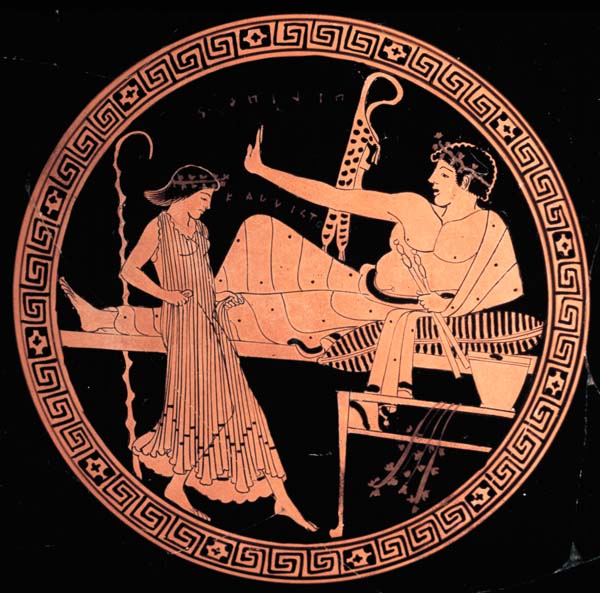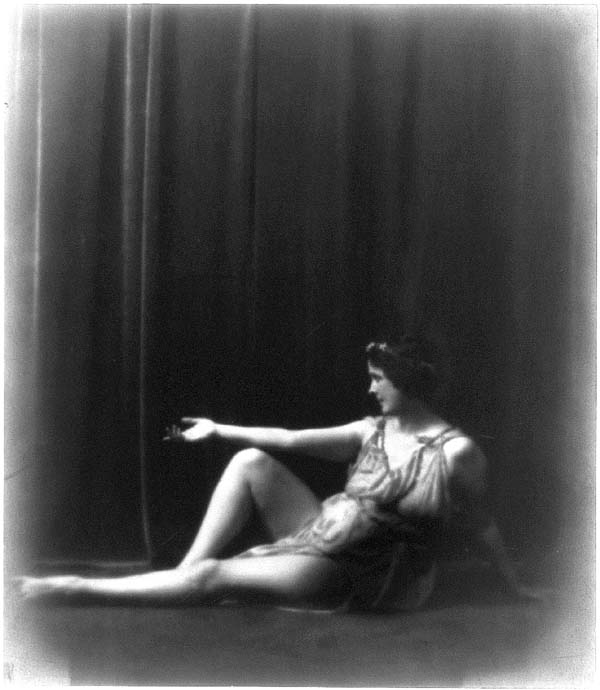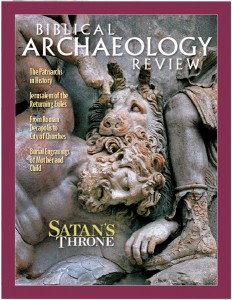Past Perfect: Pottery in Motion


Isadora Duncan (1877–1927)—mother of modern dance—used the Greek statues and art at the British Museum as the inspiration for her choreography. Her free-flowing, barefoot and loose-haired style shocked the turn-of-the-century American audiences for which she performed, but her easy and natural movement took Europe by storm. She was even compared to a goddess by the German press. She incorporated nature, art and the sacred into her dance and added skipping, jumping and running into her routine. In a posthumous collection of her writings, Duncan gave the reason for basing her movements and costumes on the Greeks: They “understood the continuing beauty of a movement that mounted, that spread, that ended with a promise of rebirth.”
A pose from a Greek attic vase from the fifth century B.C. shows a man in repose at a symposium—a Dionysian celebration of dance and drink. Duncan incorporates a similar pose into her routine to Frederick Chopin’s “Opus 17” in 1915.
Already a library member? Log in here.
Institution user? Log in with your IP address.

